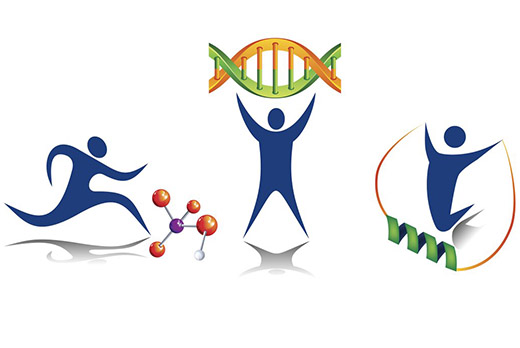What happens to the myriad molecules in our bodies when we move? The National Institutes of Health (NIH) has tasked researchers around the country to help answer this question by creating a comprehensive map of the molecular changes that occur in response to physical activity.
A metabolomics, proteomics and lipidomics ("omics") analytics team led by Emory University with collaborators at Georgia Tech will receive $13.6 million over six years as part of the national Molecular Transducers of Physical Activity in Humans Program (MoTrPAC) effort. The information they uncover could help researchers and doctors develop personalized exercise recommendations.
To create this comprehensive map, national teams of researchers will collect samples from peoples of various races, ethnic groups, sex, ages and fitness levels. Analyzing samples is where Emory and Georgia Tech researchers enter the picture.
The Atlanta researchers, who have formed the Georgia Comprehensive Metabolomics and Proteomics Unit (CMP-GA) for MoTrpPAC, will take "omics" measurements from a variety of biofluid samples.
The project's five co-investigators include Dean P. Jones, PhD, professor of medicine at Emory University School of Medicine and director of the Emory Clinical Biomarkers Laboratory; Eric Ortlund, PhD, scientific director of the Emory Integrated Lipidomics Core; Nicholas Seyfried, PhD, scientific director of the Emory Integrated Proteomics Core; Karan Uppal, PhD, leader of the bioinformatics core for the grant; and Facundo M. Fernández, PhD, a professor in the School of Chemistry and Biochemistry at Georgia Institute of Technology. The analytical laboratories are integrated through the NIH-supported Atlanta Clinical and Translational Sciences Institute (ACTSI).
"Emory and Georgia Tech teams have been successfully collaborating on other "omics" projects, and this synthesis of metabolomics, proteomics, and lipidomics approaches at our two universities is a powerful way to understand the biochemistry involved in exercise and make a significant contribution to this national effort," says Jones.
Georgia Tech researchers will be looking at changes in protein relative abundances, while Emory will be looking at protein post-translational modifications of those proteins. Georgia Tech will examine changes in lipids in a broad fashion, whereas Emory will look at specific lipids and other metabolites, such as glucose and amino acids. Both institutions have invested significantly in mass spectrometry and nuclear magnetic resonance technology that enables these measurements.
"This is a unique opportunity to build an integrated regional consortium that leverages the measurement capabilities at Georgia Tech and the clinical expertise at Emory," Fernández says. "As we continue to develop new ‘omics’ tools, MoTrPAC will be an excellent test bed for advanced methods, such as bioinformatics approaches for deep machine learning, interference-free ionization methods, gas-phase separations, and algorithms for studying metabolic network enrichment."
As a comprehensive metabolomics and proteomics chemical analysis site supporting the MoTrpPAC consortium, the CMP-GA researchers will use advanced analytical methods, including mass spectrometry, bioinformatics and chemical forensics to provide analysis of small molecules, lipids and proteins and deliver a publically available data resource and molecular transducer map that will enhance and accelerate research on diseases and conditions affected by physical activity.
Other consortium members at Emory include Eric Dammer, PhD, Shuzhao Li, PhD, Kristal Maner-Smith, PhD, Zhaohui Qun, PhD, Frederick Strobel, PhD, Karan Uppal, PhD, and Keith Wilkinson, PhD. At Georgia Tech, other collaborators include David Gaul, PhD, and David Smalley, PhD.
Writers: Maureen Rouhi, Holly Korschun

